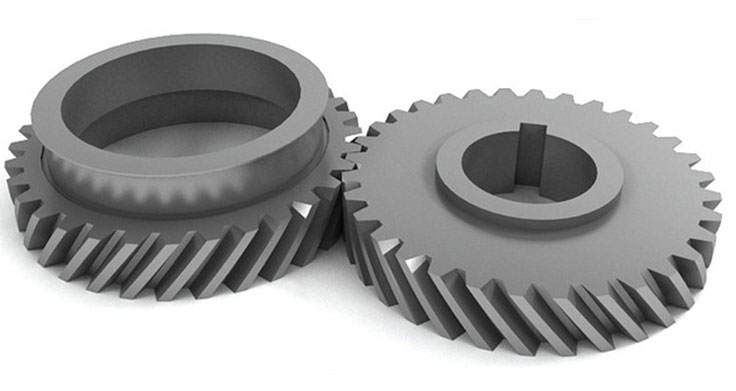
Helical gears strike a remarkable balance between power and precision in engineering solutions, making them an ideal choice for various applications. Let’s explore how helical gears achieve this balance:
1. Power Transmission and Load Handling:
Helical gears are designed to efficiently transmit power between shafts, making them capable of handling high torque and heavy loads. The helical tooth profile spreads the load across multiple teeth, enhancing the gear’s load-carrying capacity. This capability makes helical gears suitable for applications that require robust power transmission, such as industrial machinery, automotive transmissions, and heavy equipment.
2. Smooth Operation and Precision:
The gradual tooth engagement of helical gears leads to smoother meshing, resulting in reduced noise, vibration, and wear. The precision in their manufacturing and design allows helical gears to achieve accurate motion control and precise positioning. These characteristics make helical gears ideal for applications demanding high levels of precision, such as robotics, CNC machines, and automation systems.
3. Efficiency in Power Transmission:
Helical gears exhibit higher efficiency compared to some other gear types due to their continuous engagement and reduced sliding friction. This efficiency leads to less energy loss during power transmission, contributing to improved overall system efficiency and reduced energy consumption in industrial and automotive applications.
4. Versatility in Design:
Helical gears can be designed for various gear ratios and configurations to suit specific application requirements. They are compatible with different transmission types, such as parallel shaft, crossed helical, and multiple-stage gearboxes, offering versatility in engineering solutions.
5. Reliability and Durability:
Helical gears’ load distribution and reduced sliding friction lead to less wear and extended gear life. Their durability and reliability make them well-suited for continuous operation in demanding environments, reducing maintenance costs and downtime in industrial machinery and equipment.
6. Balance of Noise and Performance:
Helical gears’ smoother operation and reduced noise make them preferable for applications where noise levels are a concern, such as in precision machinery, consumer appliances, and automotive transmissions. Their ability to maintain performance while minimizing noise enhances the overall user experience.
7. Compatibility with High Speeds:
The smooth meshing action and reduced sliding friction of helical gears allow them to operate efficiently at high speeds. This makes them suitable for applications that require both power and precision at elevated rotational speeds.
8. Advancements in Gear Technology:
Continuous advancements in gear design, manufacturing techniques, and materials contribute to further optimizing the power and precision balance of helical gears. These advancements enable engineers to tailor helical gears to specific performance requirements in diverse engineering solutions.
Helical gears demonstrate a remarkable ability to balance power and precision, making them a versatile and effective choice in a wide range of engineering solutions. Their capability to handle high loads, achieve precise motion control, and operate with efficiency contributes to their wide-spread use in industries ranging from manufacturing and automation to automotive and aerospace.
